![]()

It's A Circus
Warning: As with any major tourist attraction, one would expect hoards of visitors. Here you will find no peace. Here you will find no privacy.
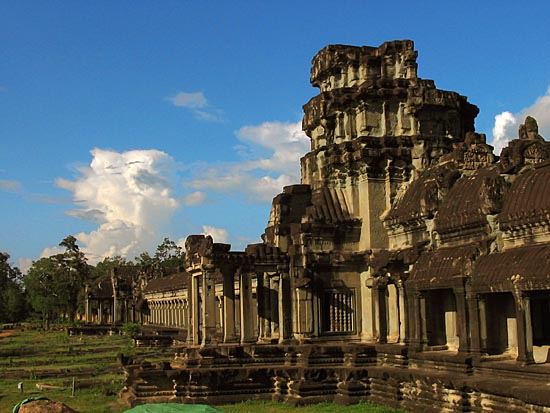
Gallery
Angkor Wat is the largest of the monuments of Angkor, and is one of the most intact. It is an architectural masterpiece. It's perfection in composition, balance, proportions, reliefs and sculpture make it one of the finest monuments in the world. This temple is an expression of Khmer art at its highest point of development.

Standing Tall
Angkor Wat is surrounded by a moat and an exterior wall measuring 1.3 km by 1.5 km. The temple itself is 1 km square and consists of three levels surmounted by a central tower. The walls of the temple are covered inside and out with bas-reliefs and carvings.
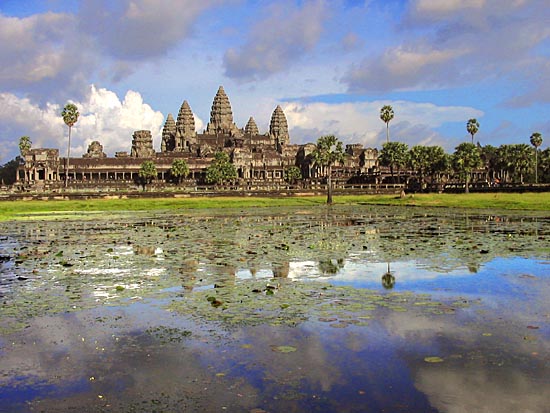
Reflections of Grandeur
Construction of Angkor Wat began early in the reign of Suryavarman II in the first half of the 12th century, and was completed only after his death. It was estimated that the construction took about 30 years..
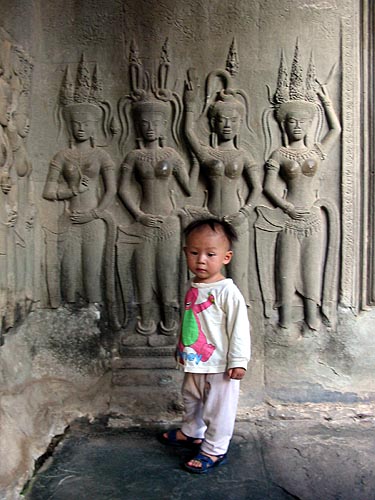
Dancing with the Ladies
Over 1500 apsaras (celestial dancers) line the walls of the galleries, offering endless visual and spiritual enchantment. These graceful and beautiful females were born from the Churning of the Ocean of Milk. From their ethereal origins to their realistic appearance on the walls of Angkor Wat, they offer timeless joy.
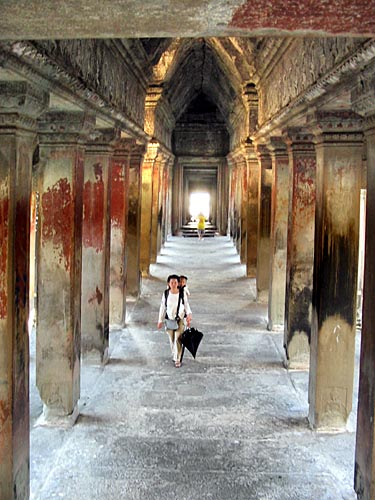
Corridors
From a distance, Angkor Wat appears to be a colossal mass of stone on one level with a long causeway leading to the centre. But on close up, it is a series of elevated towers, covered galleries, chambers, porches and courtyards on different levels linked by stairways.
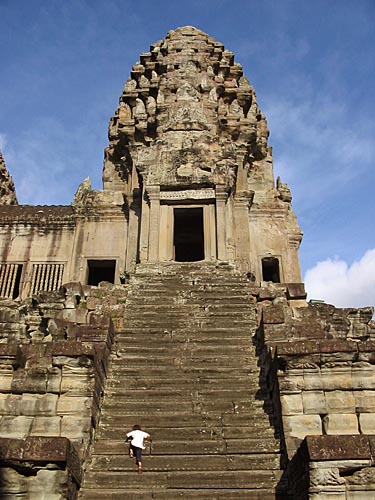
No Fear
Only the king and the high priest were allowed on the upper or third level. This level lacks the stately covered galleries of the first two levels, but it serves as the base of the five central towers, one of which contains the most sacred image of the temple.
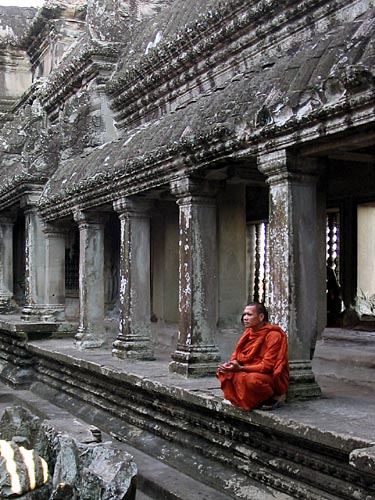
Past and Present
Originally a Hindu temple, it became a Theravada Buddhist monument in the 16th century. After the capital shifted to Phnom Penh, Angkor Wat was cared for by Buddhist monks.
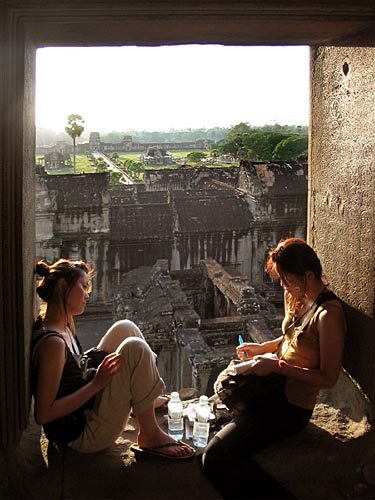
View From Above
Like the other temple mountains of Angkor, Angkor Wat also replicates the spatial universe in miniature. The central tower is Mount Meru, with its surrounding smaller peaks, surrounded in turn by continents (the lower courtyards) and the oceans (the moat).
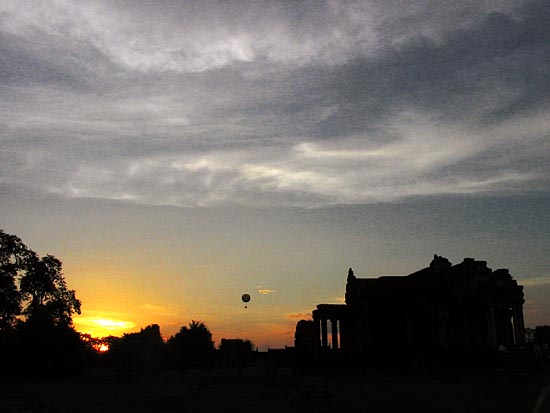
Sunset Ride
There has been considerable debate as to whether Angkor Wat was built as a temple or a tomb. Its orientation is different from other temples at Angkor as the main entrance faces the west, rather than the east. The bas-reliefs are arranged for viewing from left to right, a practice used in Hindu religious ceremonies for tombs. The emphasis on the west conforms with the symbolism between the setting sun and death.
![]()